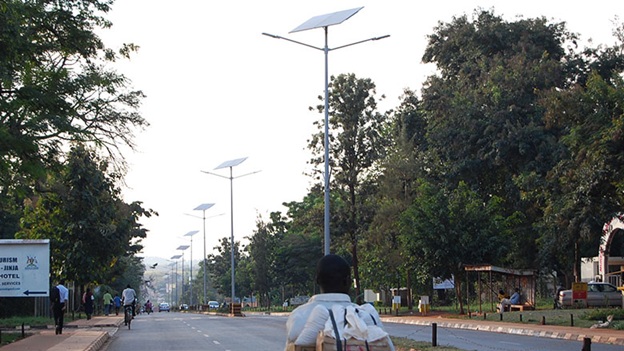Street Lights have been part of our cities dating back to as early as 500 BC when ancient Romans used oil lamps in front of their homes, and while we don’t often stop to think about this commodity, the many benefits they provide to our community go beyond illuminating our roads.
Conventional street lights have shown significant benefits such as decrease in vehicular accidents through better road visibility, safer communities by having well-lit public spaces, extended commerce hours and the sensation of wellbeing of citizens, and yet they are one of the major elements of total energy consumption in municipalities and with a big carbon emission footprint.
But DEELAT solar street lights are changing that by reducing the overall cost of maintenance and installation, the carbon footprint and creating an impact on the environment, while changing communities around the world in a positive way.
Some of the benefits of these solar street lights include renewable energy, cost-effectiveness, reliability, non-grid dependency, easier to install in remote areas and durability, making them a smart solution.
It is expected that by 2050, 68 percent of the population will be living in urban areas and cities around the world such as Kampala and Jinja in Uganda, Detroit in the United States and Seville in Spain have already adopted solar-powered LED street lights and the impact to local residents has been palpable.
Solar street lights have proven to be cheaper to install and operate than traditional street lights. An example of the cost-effectiveness of solar street lights is shown in a recent study by the University of Leeds that suggests installing and maintaining solar-powered LED street lights across sub-Saharan Africa rather than the conventional alternative could reduce upfront installation costs by at least 25 percent, electricity consumption from street lighting by 40 percent and maintenance costs of new roads by up to 60 percent. The cost-effectiveness of the solar lights allows for more installation as the overall savings can be used to buy more lights.
In addition, municipalities with a robust street lighting infrastructure see lower crime rates and higher home values. Another direct benefit of well-lit streets to the economy is additional hours for commerce, bringing more jobs and economic stability to the area.
Unlike conventional street lights, solar street lights are made using some of the latest technology like high color rendering index LED, Internet connectivity, motion and light sensor, efficient batteries for power storage, solid-state microprocessor systems and self-calibration and diagnostic processes.
They are not connected to the electrical power grid, making it easier to install in areas that are difficult to access as they do not need trenches for the cables, or existing electrical grid infrastructure to power them.
Solar-powered LED street lights are composed of a pole, a solar panel with a rechargeable battery and the lighting fixture. During the day, the solar cells in the panel capture the energy from sun, which is then converted into electricity and stored in the battery. When it gets dark, the energy stored in the battery produces the light to last during the night.
While cities who have installed solar street lights have seen a direct benefit, the impact extends to our global environment by the reduction in carbon emissions. The importance of generating clean energy has been on the agenda of leaders around the world in recent years and solar-powered LED street lights are leading the way in transitioning public utilities from traditional to renewable energy light sources.
With the growth renewable energy has experienced in recent years and old power electrical grids, opting for solar LED street lights is the future.
The clear advantages that solar-powered street lights offer like the reduction in costs and the multiple programs, grants, and credits that governments, ONG’s and companies around are allocating to renewable energy sources and the protection of our environment, there has never been a better time to invest in efficient, sustainable outdoor lighting and upgrade to a newer, cleaner and more advanced technology like solar and LED street lights.
